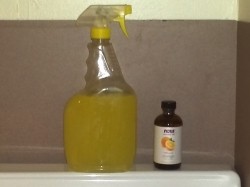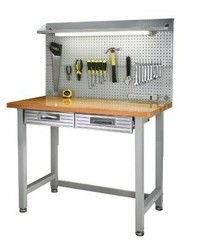You can store your additional clothing in a self-storage unit. It is essential that you take the appropriate steps to prepare your clothes for storage. Silverfish, carpet beetles and moths can make nests in your clothing and cause irreparable holes. Excess moisture and humidity can cause unsightly mold and mildew damage. These clothing storage guidelines will help you keep your clothing in the best possible condition.

How to Store Clothing
by redpointhq
Here are some tips on storing off-season clothing or heirloom items that you are saving for later generations.
Clean Before Storage
Clean clothes are less likely to attract pest. You should wash or dry clean your clothing even if they are already relatively clean. Dry your clothing on the highest heat setting possible. The heat will remove moisture that fosters the growth of mold toxins. It will also eradicate any insects that may already be present in your clothing. Do not use scented detergents, fabric softeners or starch during the cleaning and drying process. The perfumes and chemical agents in these products will attract moths and other insects.
 Care for your special clothing |
Use the Right Hangers
Haphazardly folding your clothes and tossing them in a box can be a costly mistake. Hang your clothes whenever possible. Use plastic or cedar hangers for your dresses, blouses, coats and dress pants. Do not use metal hangers as they may rust if moisture is present. Cover your hangers with a non-bleached muslin fabric so that the clothing doesn’t have direct contact with the hangers. Thin garment bags are susceptible to mildew. You should use thick canvas bags to protect your clothing.
Avoid Airtight Containers
Airtight containers or vacuum sealed storage bags are problematic because they can crush the fabric. The airtight environment also fosters mold and mildew. Store your garments loosely so that air can circulate. This enables your clothing to breathe. Natural fibers, such as cotton, linen, wool and silk, require adequate ventilation during storage to prevent the growth of harmful microorganisms. You can use wardrobe boxes with built-in hanging rods that are specifically designed for storing garments.
Avoid Folding
Store your clothing flat if it is not practical to hang them up. You should fold the clothing as little as possible. Some fabrics, such as fur, should not be folded as it ruins the fibers. When you stack your garments, place a sheet of acid-free paper between each item of clothing. The tissue paper will help prevent the colors from fading. If you must fold your clothes, place a layer of the acid-free tissue paper between each crease. This will help prevent fiber breakage along the fold lines. You should avoid using drawers lined with shelf paper as the glue can attract insects.
Climate Controlled Storage
Place the garment bags or boxes in a dark, cool storage area that is dry and well-ventilated. Cold basements and hot attics are not recommended due to the temperature extremes. Sunlight and high humidity can cause considerable damage to clothing. Humidity is an important element in the growth of mold and mildew. Sunlight can cause colors to fade. If you don’t have the proper climatic conditions and space in your home, consider using a climate-controlled storage unit.
Use Silica & Cedar
You can reduce moisture by placing tiny packets of desiccant or silica gel in the bottom of the bags or in the boxes. This inhibits the growth of mold and mildew. Do not allow the desiccant to touch your clothing. Cedar chips are an effective and natural way to control pests. The odor from moth balls and other synthetic pest control products is difficult to remove from the fabric after it penetrates clothing fibers.
Label & Inspect
You should label each box and clothing bag with a description of the contents and the date that you placed it in storage. Inspect your garments every 8 to 12 months for signs of mold and pest infestations. Replace the silica gel packets and cedar wood chips if your clothes will remain in storage.
About the Author
John Hannah is an avid blogger who loves web design and rock climbing. His current projects include work for Sunset Beach Self Storage that serves the Sunset Beach, North Carolina area.
You might also like
Use Essential Oils to keep spiders awayUsing essential oils is a great natural and inexpensive method to keep spider...
How to build the perfect garage workbenchLighted workbench in the garage makes the perfect spot for craft projects, bu...



 How To Store Antique Textileson 05/10/2012
How To Store Antique Textileson 05/10/2012
 How to Store Antiqueson 05/03/2012
How to Store Antiqueson 05/03/2012
 Specialty Self Storage Adviceon 05/03/2012
Specialty Self Storage Adviceon 05/03/2012
 How to Store Family Photoson 05/01/2012
How to Store Family Photoson 05/01/2012


Comments